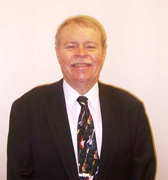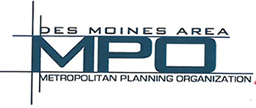To begin with, let’s define the word “disability.”
According to the ADA (The Americans with Disabilities Act of 1990 as restored in 2008), a disability is any long-term mental or physical impairment that substantially limits one or more major life activities, like:
- Walking, standing, lifting, bending
- Speaking, seeing, hearing, communicating
- Breathing, eating, sleeping
- Learning, reading, concentrating, thinking
- Caring for oneself (grooming, budgeting, cooking, dressing, etc.)
- Performing manual tasks (doing housework, laundry, driving, etc.)
- Working (earning enough money to live on)
In other words, a disability is a long-term impairment in a major life function. Temporary conditions like a typical pregnancy, a broken bone, and/or a minor mosquito bite would not, for our purposes here, be considered a disability.
Disability fits into sustainability as disability is and always has been a part of our society. Disabilities of all kinds have been recorded throughout history. Disabilities such as blindness, deafness, difficulty in walking, amputations, disease, and mental health deficiencies as well as cognitive impairments are well documented throughout recorded history, religious text, and literature.
Sustainability and disability go hand in hand as people with disabilities comprise the largest minority in our community. People with disabilities are a larger minority than racial and ethnic groups because disability conditions are non-discriminatory; disabling conditions are universal. Disabilities take place regardless of age, ethnicity, religion, gender, creed, national origin, and/or sexual orientation.
The disability community comprises approximately 20 percent of our population. Although people with disabilities have conditions and limitations that prevent us from doing certain activities, people with disabilities still are capable of functioning in other ways. And, as our overall population continues to grow older and grayer, more people with disabilities join the ranks of those of us who are already in the disability community.
Sustainability for our community and for people with disabilities can be jointly incorporated in new creative and innovative ways. One way is to accept the large number of people with disabilities already in the community. Another is to plan for the projected rise of the number of people with disabilities and their needs in the overall community.
Fortunately, over the past few decades, many of the barriers restricting access to public accommodations for people with disabilities have been identified and are being removed. The barriers faced by people with disabilities are both architectural and attitudinal. Some barriers are the lack of accessible housing, employment, education, transportation, socialization, and recreation.
Fortunately, most people with disabilities are resilient and want their freedom and first-class citizenship in the community. However, and unfortunately, there has been an all-too-often business as usual attitude when it comes to the needs of people with disabilities. This “business as usual” attitude and mind set has prevented planners and the general public from taking steps toward thoughtful, vigorous, and innovative approaches toward removing barriers that confront and confound people with disabilities. Furthermore, the friends, family members, and neighbors of people with disabilities are also confronted and confounded by the barriers faced by people with disabilities. The stereotypes, fears, and misconceptions about people with disabilities run wide and deep.
One area of particular importance for the disability community and the community at large is the lack of employment opportunities for people with disabilities. This area of need can be addressed by identifying and creating training and job placement that can be designed and/or modified to meet the special needs of people with disabilities. With skill training, people with disabilities can be made productive in our society. Although it is unreasonable to think of a blind person driving a city bus, perhaps that same blind person could work as a dispatcher, bus mechanic, planner, or some other job at that transit organization. Identifying aptitudes and abilities for people with disabilities is what will help us to sustain our society. People with disabilities are often unemployed even though we seek the status of employment as well as the financial rewards that employment provides. However, the attitude of many people in society is that a person with a disability is unable to perform any kind of work at all. This is due to the prevailing negative attitude of society toward people with disabilities.
Unfortunately and regrettably, this negative attitude toward people with disabilities is often most firmly held by people with disabilities themselves. This reality is due to the influences people with disabilities face themselves in the community. The good news is that, with education and advocacy, our entire population can change what it means to be disabled.
In terms of performing a work task, a person with a disability may perform the work task in a different manner than able-bodied workers, but it is not how the task is done but rather that the task is successfully and proficiently achieved. It will take 50 or more years to change society’s perception of people with disabilities. This is in part why The Tomorrow Plan, which targets the year 2050 and beyond, is an important opportunity for shifting this perception. Part of the barriers faced by people with disabilities is the well-established, well-funded, benevolent systems that are in place to serve people with disabilities. These systems are usually intended to provide a “safety net” for people with disabilities, but the “safety net” structures often become a trap and a point of no return for people with disabilities. A thoughtful, rational, and comprehensive review of these systems needs to be conducted to determine the effectiveness and the potential of providing either a gateway to inclusion or a gateway to a life of isolation, discouragement, and despair for people with disabilities. Sadly, this isolation and despair is all too often shared with the friends, family, and neighbors of people with disabilities.
Often people with disabilities only understand the system as it has been established for them. For example, individuals who receive Social Security benefits including disability and Supplemental Security income are 99 percent likely to stay on these benefit programs. This means that millions of Americans with disabilities are faced with a no-win future. And this is a no-win for both the recipient of Social Security disability benefits and the society at large. The fears faced by people with disabilities who seriously pursue the possibility of returning to work are confronted with the real life and often punitive outcomes of their successful employment achievements. This is the main barrier they face in returning to work and inclusion in society. Therefore, part of the sustainability picture needs to include a thoughtful assessment of how people with disabilities can successfully return to work without facing severe and sometimes criminal implications of getting a job. But with employment, people with disabilities can live in and contribute to our community.
For centuries, people with disabilities have been isolated from opportunities, responsibilities, and full inclusion in society. This historical seclusion does not only detrimentally affect those of us with disabilities but also detrimentally affects the entire community, as people with disabilities are unable to contribute and participate in the community. As a result of these long-held conditions, the people with disabilities become a burden to the society instead of being an asset. An overall lack of creativity is often found even among programs that purport to serve people with disabilities in finding job opportunities and socialization in the community.
As we look toward our plan for tomorrow, we need to think not only of highways, byways, parks, waterways, clean air, education, and economic development; we also need to look at the citizens who will comprise the largest minority in our community, namely people with disabilities. There is a profound need to plan for how people with disabilities will live in the community as well as contribute to the community we call home. The contributions of people with disabilities need to be incorporated in the future for the entire community.
Let’s plan for a brighter future of all of our citizens.
 Frank Strong, Jr. is the Associate Director of the Central Iowa Center for Independent Living (CICIL). CICIL is a non-residential training and advocacy program which helps people with disabilities live independently in the community. CICIL serves people regardless of disabling condition and/or age. CICIL serves people with sensory disabilities (blindness and deafness), mobility disabilities (use of wheelchair and/or canes) and mental health disabilities and/or intellectual disabilities.
Frank Strong, Jr. is the Associate Director of the Central Iowa Center for Independent Living (CICIL). CICIL is a non-residential training and advocacy program which helps people with disabilities live independently in the community. CICIL serves people regardless of disabling condition and/or age. CICIL serves people with sensory disabilities (blindness and deafness), mobility disabilities (use of wheelchair and/or canes) and mental health disabilities and/or intellectual disabilities.




